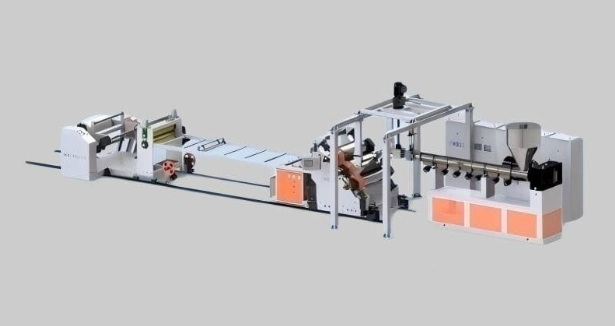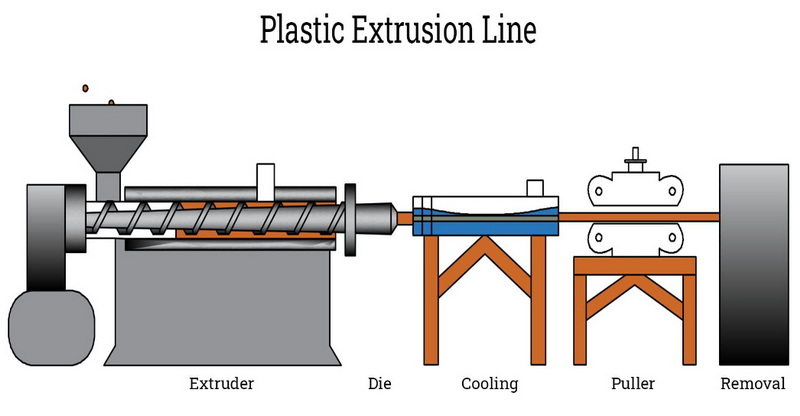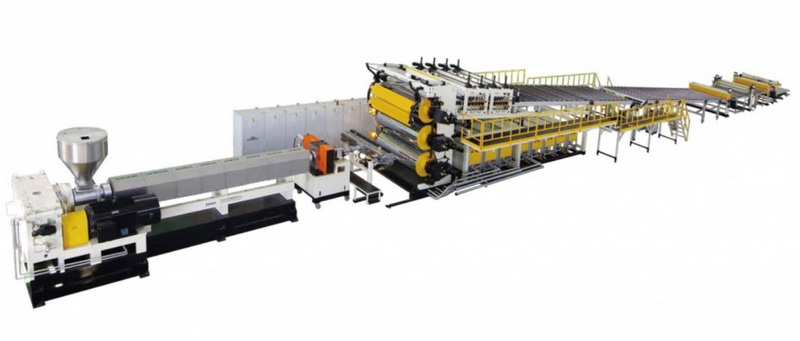Content Menu
● Understanding PP Thick Plate Extrusion Production Lines
● Key Benefits of PP Thick Plate Extrusion Production Lines
● Technological Advancements in PP Thick Plate Extrusion
● Applications of PP Thick Plates
● In-depth Look at Applications
>> Packaging Industry
>> Automotive Sector
>> Construction Applications
● Challenges in PP Thick Plate Production
● Future Trends in PP Thick Plate Extrusion Technology
● Conclusion
● FAQ
>> 1. What materials can be processed using a PP thick plate extrusion line?
>> 2. What thickness range can be achieved with PP thick plates?
>> 3. How does recycling work in the extrusion process?
>> 4. What industries benefit from using PP thick plates?
>> 5. Are there any environmental advantages to using PP materials?
Polypropylene (PP) thick plate extrusion production lines are essential in various industries due to their efficiency, versatility, and environmental benefits. This article explores the key benefits of these production lines, their applications, and the technological advancements that enhance their performance.

Understanding PP Thick Plate Extrusion Production Lines
PP thick plate extrusion involves melting polypropylene resin and forming it into thick sheets through a continuous process. The production line typically consists of several components, including:
- Extruder: The core machine where the raw PP material is melted and shaped.
- Die: A flat die that shapes the molten material into sheets.
- Cooling System: Cools the sheets to maintain desired thickness and quality.
- Cutting Unit: Cuts the sheets into specified lengths for further processing.
The process is highly automated, allowing for high production rates and consistent quality.
Key Benefits of PP Thick Plate Extrusion Production Lines
1. Cost-Effectiveness
- The extrusion process is highly efficient, minimizing waste and maximizing output. Continuous operation allows for large quantities of material to be produced at lower costs. Additionally, scrap material can often be recycled back into the production process.
2. Customization
- Manufacturers can easily adjust the properties of the produced sheets by incorporating various additives, colorants, and fillers during the extrusion process. This flexibility allows for tailored solutions that meet specific industry requirements.
3. Consistent Quality
- Advanced automation and precise control over parameters such as temperature and thickness ensure that the final products maintain uniform quality. This consistency is crucial for applications requiring high-performance materials.
4. High Throughput
- Modern PP thick plate extrusion lines are designed for high-speed production, enabling manufacturers to meet large-scale demands efficiently. With capacities reaching up to 750 kg/h or more, these lines can significantly boost productivity.
5. Environmental Benefits
- PP is a recyclable material, making it an environmentally friendly choice. The production lines are designed to minimize energy consumption and reduce emissions, contributing to sustainable manufacturing practices.
6. Versatility in Applications
- PP thick plates are used across various sectors, including:
- Packaging: Lightweight and durable packaging materials.
- Automotive: Interior components and protective covers.
- Construction: Wall cladding, roofing membranes, and insulation.
- Consumer Goods: Household items and recreational products.
Technological Advancements in PP Thick Plate Extrusion
Recent innovations in extrusion technology have further enhanced the capabilities of PP thick plate production lines:
- Improved Extruder Designs: New screw designs optimize material flow and heat distribution, improving melting efficiency and product quality.
- Advanced Control Systems: Automation technologies allow real-time monitoring and adjustments to maintain optimal processing conditions.
- Energy Efficiency Improvements: Modern systems are designed to consume less energy while maintaining high output levels, reducing operational costs.
- Enhanced Cooling Techniques: Advanced cooling systems ensure rapid cooling of sheets without compromising quality, allowing for quicker processing times.
Applications of PP Thick Plates
The versatility of PP thick plates makes them suitable for a wide range of applications:
- Chemical Industry: Used in tanks, containers, and other equipment due to their chemical resistance.
- Food Industry: Safe for food contact applications thanks to their non-toxic properties.
- Environmental Equipment: Ideal for manufacturing parts in waste management systems due to their durability against harsh conditions.
- Construction Materials: Employed in various structural applications where lightweight yet strong materials are required.

In-depth Look at Applications
Packaging Industry
In the packaging sector, PP thick plates are favored due to their lightweight nature combined with excellent strength characteristics. They are commonly used for:
- Blister Packs: Providing a protective barrier for pharmaceuticals and consumer goods.
- Food Containers: Ensuring safety and freshness while being easy to handle.
The ability to customize thickness and color makes them ideal for branding purposes as well.
Automotive Sector
The automotive industry benefits significantly from PP thick plates due to their lightweight properties that contribute to fuel efficiency. Applications include:
- Interior Panels: Offering aesthetic appeal while being durable.
- Bumpers and Fenders: Providing protection without adding excessive weight to vehicles.
These components can be manufactured with varying degrees of flexibility and rigidity depending on specific needs.
Construction Applications
In construction, PP thick plates serve multiple purposes:
- Wall Cladding: Offering insulation properties while being resistant to moisture.
- Roofing Membranes: Protecting buildings from weather elements while being lightweight.
Their durability ensures longevity in harsh environments, making them a preferred choice among builders.
Challenges in PP Thick Plate Production
While there are numerous benefits associated with PP thick plate extrusion production lines, some challenges must be addressed:
1. Material Variability
- Variations in raw material quality can affect the final product's consistency. Manufacturers must ensure that they source high-quality polypropylene resin to mitigate this issue.
2. Maintenance Requirements
- Regular maintenance of machinery is crucial to prevent breakdowns that can halt production. Implementing a proactive maintenance schedule can help minimize downtime.
3. Market Competition
- As demand increases, competition among manufacturers intensifies. Companies must continuously innovate their processes and products to stay competitive in the market.
4. Environmental Regulations
- Compliance with environmental regulations regarding emissions and waste management can pose challenges for manufacturers. Investing in cleaner technologies can aid in meeting these standards while enhancing brand reputation.
Future Trends in PP Thick Plate Extrusion Technology
Looking ahead, several trends are likely to shape the future of PP thick plate extrusion production lines:
- Smart Manufacturing: The integration of IoT (Internet of Things) technologies will enable manufacturers to monitor processes remotely and make data-driven decisions for optimizing production efficiency.
- Sustainable Practices: Increased focus on sustainability will drive innovations aimed at reducing energy consumption and enhancing recyclability within the production process.
- Advanced Materials Development: Research into new formulations of polypropylene could lead to even greater performance characteristics such as improved impact resistance or enhanced thermal stability.
Conclusion
PP thick plate extrusion production lines offer numerous advantages that make them indispensable in modern manufacturing. Their cost-effectiveness, customization options, consistent quality, high throughput, environmental benefits, and versatility in applications position them as a vital technology across various industries. As technological advancements continue to evolve these systems, manufacturers can expect even greater efficiencies and capabilities in producing high-quality polypropylene products.

FAQ
1. What materials can be processed using a PP thick plate extrusion line?
PP thick plate extrusion lines primarily process polypropylene resin but can also accommodate various additives for enhanced properties.
2. What thickness range can be achieved with PP thick plates?
The thickness range for PP thick plates typically varies from 3 mm to 30 mm depending on the specific machine configuration.
3. How does recycling work in the extrusion process?
Scrap materials generated during cutting or processing can be reintroduced into the extruder for recycling, reducing waste and costs.
4. What industries benefit from using PP thick plates?
Industries such as packaging, automotive, construction, food processing, and environmental management benefit from using PP thick plates due to their durability and versatility.
5. Are there any environmental advantages to using PP materials?
Yes! Polypropylene is fully recyclable and has a lower environmental impact compared to many other plastics when produced with energy-efficient processes.






















